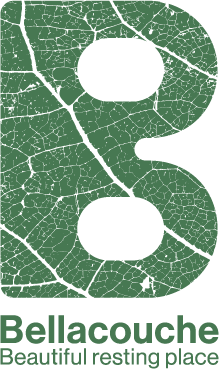Comparing wool with cotton and bamboo
Below are some environmental comparisons of wool with cotton and bamboo fibre:
Wool
locally abundant (UK)
produced by grass fed animals, therefore little or no outside input is required, such as foreign produced feedstuffs
land is not ploughed, therefore sequestering carbon in permanent pasture
an annually produced crop, the sheep are sheared and return to graze
very simple processing into felt, just detergent to scour the wool, then mechanical tangling of the wool
Bamboo
The bamboo that is used in textiles is technically classed as a ‘manmade’ fibre; it is not naturally fibrous, and has to be treated with caustic chemicals by the Rayon process to make it into fibre for spinning and weaving into cloth. Add ‘textile miles’ to this – i.e. it is mostly produced in China – and it’s environmental credentials become very dubious. Here’s just one of the links for more information but there are plenty of others. Personally, I don’t buy anything made from Bamboo fibre.
Cotton
Cotton carries a massive carbon footprint. With the growing, harvesting and processing of the fibre we see soil erosion on a massive scale, exploitation, pesticides, fertilizers (both the latter with their own, huge footprint), massive water use, massive mileage in processing and manufacture before it reaches the UK. Organic cotton production is a whole heap better, but there are mountains of cotton recyclables in the UK, which it would be far greener to make use of.
My Personal Summary
I would say this, of course, but wool IS the best. Pasture fed sheep utilise carbon to grow wool, and 50% of weight of wool is organic carbon, so whilst it is in use it is storing carbon and preventing it from entering into the atmosphere. A biodiverse pasture is also taking carbon out of the atmosphere and sequestering it in the soil. If the sheep are managed in a regenerative and welfare friendly way, then by choosing to wear and use wool, you are directly helping to reduce carbon escaping into the atmosphere.
Primitive breeds are best, as they tend to be more resistant to pests and diseases and can be grazed as part of a generative or conservation management. They also tend to be lighter on the land, and if pasture is sylvo-pasture - alley growing of trees to provide shelter for the animals, extra diverse foraging and even crops for us humans (and sometimes birds) such as elder and hazel, then we have a beautiful system for providing food and fibre in the best way that is possible.
The other fibres I’d like to mention are flax and hemp, both of which used to be grown and processed into cloth in the UK. Unfortunately we have lost all our baste fibre processing mills, but potentially the UK could be self-sustaining in the fibres we need to cloth ourselves. Both fibres can be grown without the use of fertilisers and pesticides and the processing is also, potentially, low impact.
